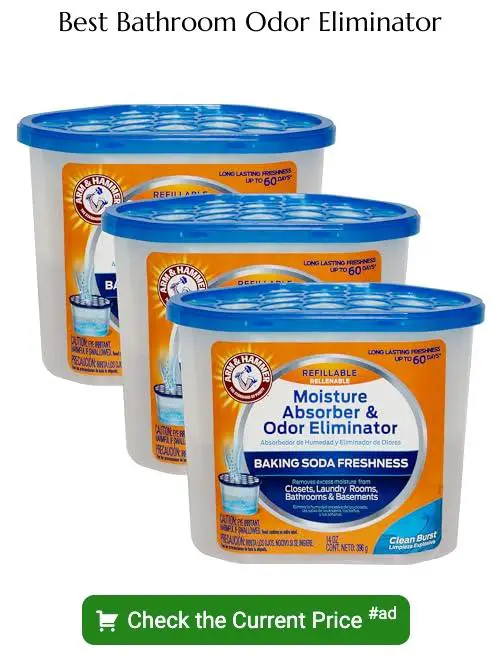Last updated on
Unpleasant sewer smells in your bathroom can be more than a nuisance, and this article will clarify the causes and provide practical solutions to this common issue.
Key takeaways:
- Dry P-trap can cause sewer smell.
- Damaged toilet seal lets smells seep in.
- Broken or poorly installed vent pipes back up odors.
- Fix dry P-trap by running water through the drain.
- Use a new wax ring or professional help for toilet seal.
Common Causes of Sewer Smell in House
A dry P-trap is often the prime suspect for that foul odor. This little curve in the piping under your sink is meant to hold water, creating a seal that blocks sewer gases. When it dries out, it’s an open invitation for those gases to waltz into your bathroom.
Then there’s the toilet seal – that inconspicuous ring you seldom think about until your nose wrinkles. It’s supposed to be airtight, keeping what’s beneath your toilet in the sewage line. However, with enough wear and tear or improper installation, it can fail, letting the smells seep through.
Lastly, vent pipes play the dual role of allowing sewer gases to escape the system and letting air in to maintain water-flowing pressure. These can be tricky culprits. A clog, damage, or even a poor installation job can mean these pipes aren’t doing their duty, often resulting in a bathroom that’s less oasis, more sewer-side.
Dry P-trap
Understanding the mechanics behind a dry P-trap helps to pinpoint one of the more common culprits for that wretched sewer stench. Essentially, this U-shaped pipe is designed to hold water, creating a seal that blocks sewer gases from wafting into your bathroom.
However, when it runs dry — often in a guest bathroom that’s rarely used or a floor drain that doesn’t see much action — this seal fails, and the unpleasant odor finds its way into the room.
Restoring this barrier is often as simple as running water through the drain for a minute. It pays to routinely check these traps, especially if you’ve been away or have infrequently used fixtures in your home.
Regular usage ensures the trap remains effective, securing your bathroom from turning into an unintended sauna of sewer scents.
Damaged Toilet Seal
At the base of every toilet is a wax ring or seal, which creates a watertight connection between the toilet and the drainpipe. Over time, this seal can deteriorate or become loose, allowing sewer gases to seep into the bathroom. Aside from the odor, another telltale sign of a compromised seal is water leakage, particularly during flushing.
A damaged seal is more than just an olfactory annoyance—it can lead to water damage and mold growth. To resolve this, sealing the toilet to the floor with a new wax ring or rubber gasket is often required. Although this can be a do-it-yourself job for the handily inclined, the process does involve removing the toilet, which can be cumbersome and may risk compounding the problem if not done correctly. Thus, it might be prudent to consider professional assistance. This not only ensures a properly secured seal but also a comprehensive check to rule out any other underpinning issues that could be contributing to the smell.
Broken, Clogged or Poorly Installed Vent Pipes
Vent pipes are the unsung heroes in keeping your bathroom free from malodors. However, if they’re obstructed or improperly fitted, they become accomplices to bad smells.
When these pipes are clogged, air circulation within your plumbing system is compromised. Instead of harmful gases escaping through your roof safely, they backpedal right into your bathroom. Leaves, nests, or even snow can block these airways, demanding a clear-out.
A poorly installed vent can be just as problematic, misdirecting the scent of sewage into your living spaces. It’s like setting up an express route for foul odors directly into your home. To prevent this, ensure vent pipes ascend through the roof, not just into attics or crawl spaces – out of sight shouldn’t mean out of mind.
Regular inspections catch these issues early, averting a nosedive into stink-town. Keep an ear out for gurgling sounds after flushing – it’s a telltale sign that your vent pipe is protesting a blockage. Don’t hesitate to call in a professional if suspicions of vent pipe malfunctions arise. It’s better to nip these problems in the bud than to suffer an olfactory assault.
How to Eliminate Sewer Odor – Popular DIY Sewer Smell Solutions
Water, the silent sentry in your bathroom’s U-shaped pipes, typically keeps the sewer smell at bay. However, if these traps dry out, perhaps from infrequent use, replenishing the water is a quick fix. Simply run the faucet for a minute or flush the toilet, and the barrier is back in business.
Ventilation isn’t just for steam and aromatherapy; it’s essential for maintaining proper airflow and preventing vacuums that could siphon water from traps. If you suspect poor ventilation, a strategically placed fan or a crack of the window can temporarily alleviate the issue. However, be aware that chronic ventilation issues often mask deeper plumbing complications that might require a professional’s touch.
Clogs can also invite foul odors, acting as a stage for bacteria and waste to put on an unwelcome performance. So, pull out the plunger or mix up a concoction of baking soda and vinegar for a non-chemical clog combatant. These simple solutions can often send the smells packing, restoring your bathroom’s reputation as a sanctuary of cleanliness.
Recap





